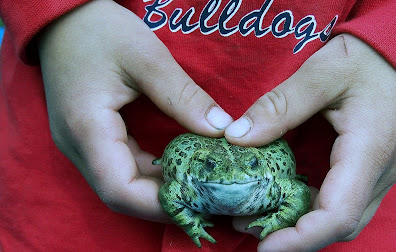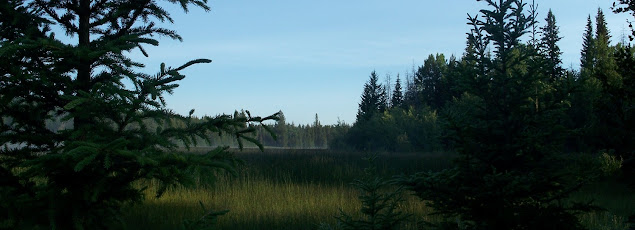We live in the bush and have created a garden that was unheard of in
these parts. In fact, the old timers thought we were crazy (26 years ago). Cultivating
wild flowers, greens and vegetables along with domestic greens and
vegetables. Enriching the soil with what is around us, starting apple trees, doing it all by
hand with the help from tools we've made. Simply. Leaving a light
footprint.
We live in the "working forest". Logging, ranching and mining. Consuming.
We call it bushcraft gardening. I suppose you could call it survival gardening because that is how we survive.
 |
| Our tree limb greenhouse. 150lbs of tomatoes |
Since we've been here the winter temperatures have gradually risen. We don't see a week or two of -30 or -40 anymore. When the cold began to move into our cabin anything on the floor froze.
It might get down there for a few nights now. We might get a week or two between -20...-28 with a -18 in there. Still cold but it's an easier way. How fragile we are.
.
We're more relaxed now. We still live in our 800 sq foot cabin. We would not live anywhere else.
Fruit trees have been difficult but now we have a small orchard. Between
moose, deer, bears, voles and mice it has been a challenge.
Honey bees have been emotionally draining because they die from causes we can't control. We don't raise them now. Instead we've been cultivating our relationship with wild bees. Every year there are fewer. This year we had bumble bees. The 5 or 6 species of wild bees usually pollinating our plants were missing.. We've been using a feather trying to pollinate.
Growing our own food has taught us about survival. In between frost, hail, bear, moose and deer, birds, rabbits, mice, voles, bugs, hillbilly pigs, the dreaded free range cattle and the government spraying herbicide over the forest we try to relax. The boreal forest is filled with animals that want almost everything that we grow.
He's a young adult now.
After a judo tournament he skyped us,
" My body is aching, my fingers and toes skinned
My face hurts to touch and I can't make fists due to ligament injuries
My spirit is unwavering
Looking forward to getting my Nidan and making knives".
This gardening method is sustainable, organic and has very little impact except birds, bugs, mice, snakes and worms have never had it better.
It's a state of mind going into the wilderness with nothing but seeds and a shovel, an open mind, relaxed and keenly observing your surroundings with a sense of freedom and balance.
 Everything
around you may have a use for your bush garden. Rocks act like sinks
storing heat energy from the sun that can offset cool nights. They are
fertilizers slowly giving important nutrients to the soil. They collect
and trap water. They can also be protection from animals and cover for
others, like toads.
Everything
around you may have a use for your bush garden. Rocks act like sinks
storing heat energy from the sun that can offset cool nights. They are
fertilizers slowly giving important nutrients to the soil. They collect
and trap water. They can also be protection from animals and cover for
others, like toads.That old stump – do I remove it, or can I plant a garden around it and let it slowly fertilize?
 |
| Rocks picked for a garden wall |
The fence is to keep out free range cows. For 26 years the free range livestock has been the greatest threat to our garden.
Rotten wood has got to be the supreme bush fertilizer adding organic material and fluffing up heavy soil.There are droppings from animals like deer, moose and rabbit which are good "on the spot" fertilizers.
Harvesting what you need with care and never taking more than 1/3 of anything.
Surviving with respect and again, with a light foot step

Fireweed shoots--Excellent greens
Cultivate dandelions, wild onions, wild parsnip, lambs quarters,
We've been fertilizing by mulching with green grass (before it goes to seed) covered with an inch of sand then covered with rotten wood. We have some chicken manure that we fertilize beans and greens with. After the crop is harvested plant rye grass or Chinese vegetables. When the thick head is 6 to 8 inches high we turn it over.
a young adult now learning about the city and people. The old timers are dead. It will be our 27th winter. Not much has changed here. We're older and still thriving in the bush. We wonder and ask ourselves.
Regards,
Aki and Scott
Our business, http://www.caribooblades.com/









